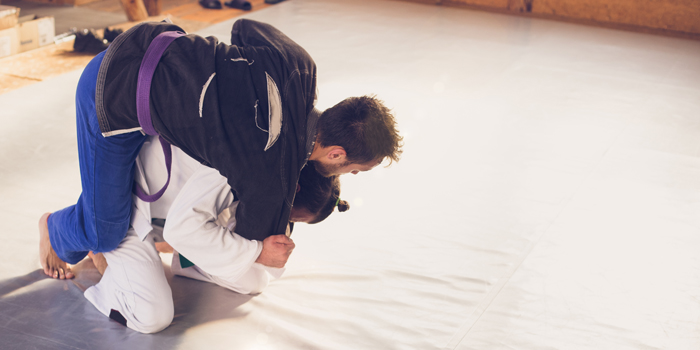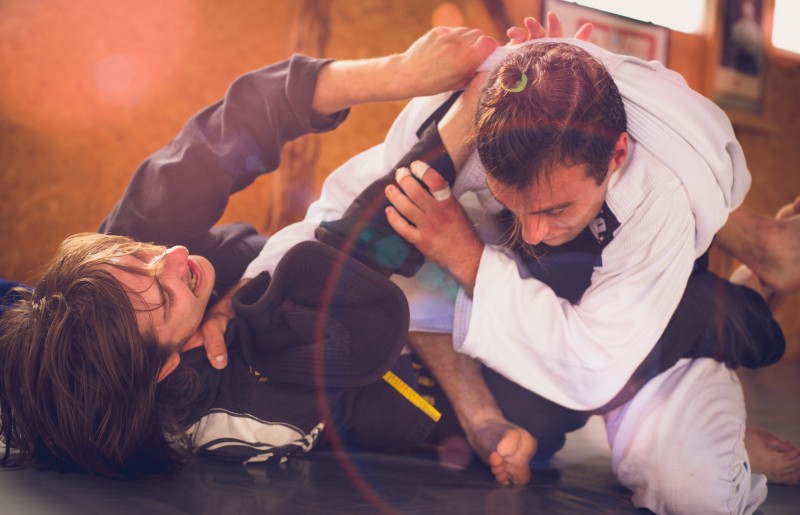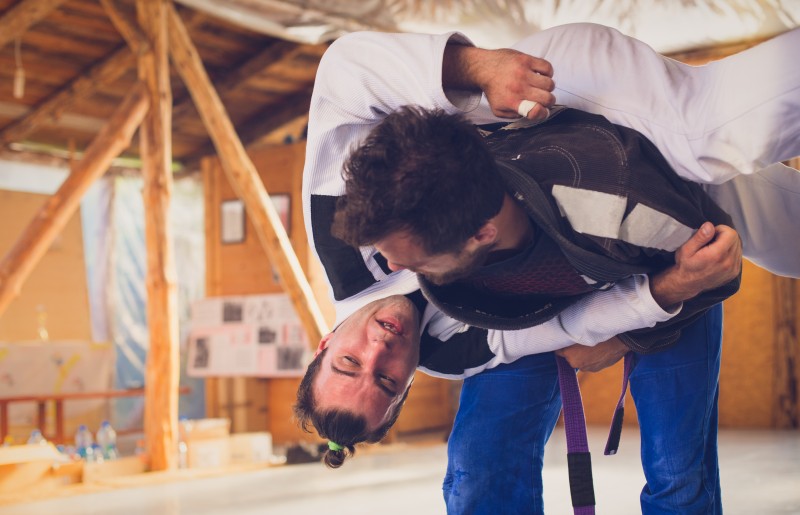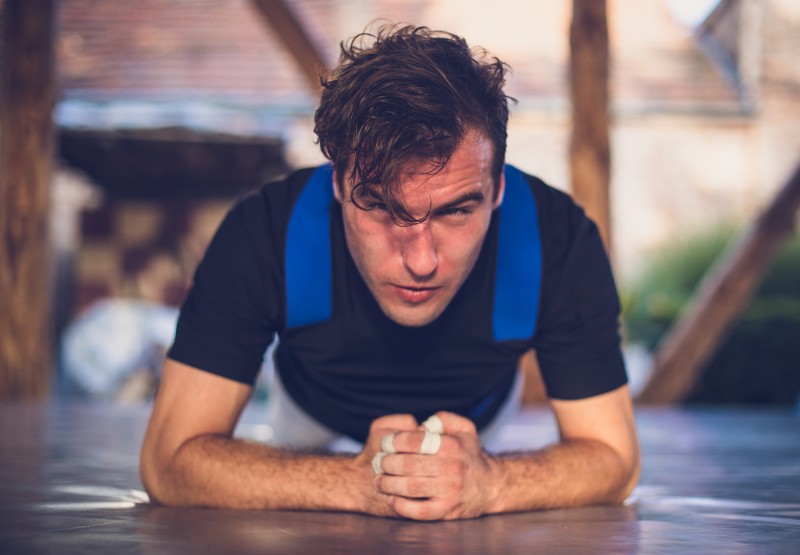
I clearly remember the day I decided to quit powerlifting: 23 years old, halfway through my second round of grad school, seven years into my life as a competitive powerlifter, a slight tear in my left adductor that left me unable to perform any lower body lifting for an estimated two to three weeks. I decided to take a short walk along the river bordering my parent’s house in New Jersey. I was on winter break, visiting from Washington State for the holidays. The path along the river is flat and did not irritate my torn adductor. I injured it squatting, and it only hurt coming up out of the hole. But minor muscles tears are no big deal; it’s part of the iron game, as any experienced lifter will tell you.
There's another thing any experienced lifter will also tell you: each injury pulls you, to varying degrees, out of your mindset of constant forward progression and places you in a state of self-examination. I thought along the river. Why am I doing this? For what?
Q&A: Suggestions on strength training for Brazilian Jiu-Jitsu
My aim, at the time, was to compete over the summer in the USAPL and break the junior American squat record of 528 pounds in the 163-pound division. I had to gain maybe 25 pounds on my squat and lose five pounds of bodyweight. With that timeline, even accounting for the adductor’s convalescence, the goal was certainly achievable. I was close, therefore, to accomplish what seemed to me like a real achievement: a respectable record in a legitimate federation. With the completion of such a lift, no one could say I wasn’t good, wasn’t strong, wasn’t a serious lifter.
But midway through my walk, a notion struck me. The only person putting pressure on me—the only one who truly cared—was me. If I decided to quit, to hang up my 10-millimeter belt and never tie my wooden-heeled shoes again, the decision affected me. Only me.
I didn’t have to compete in powerlifting. It never felt like that before, and immediately, I decided, with no regret or sadness, that my life of powerlifting was over.
Brazilian Jiu-Jitsu: The Beginning
That same day, I decided to start training Brazilian Jiu-Jitsu (BJJ). I’d always been interested in the martial arts, having enjoyed some karate as kid with my father, who is a second-degree black belt. Coincidentally, an old powerlifting friend had, within the last six months, already transitioned from powerlifting to BJJ. A few days later, once my friend’s academy re-opened for the holidays, I went with him to take a free class.
The class was taught by the academy’s owner, Vítor “Shaolin” Ribiero, three-time black belt world champion and an undisputed legend of the sport. I learned from the short jog of the warm-ups that my aerobic capacity sucked, and from the initial drilling—circling around on a turtled opponent’s back—that my coordination had to improve. My partner for the turtle drill, I discovered later, was Eduardo Telles, turtle-guard inventor and BJJ legend, who was visiting Shaolin for the holidays. I wasn’t allowed to really spar, but Shaolin taught me a basic stack pass and an Americana from mount.
Fast forward to my return to Washington State, joining the team in my city at Newborn Cascao Jiu-Jitsu. I jumped into the sport full-blast, taking four to six classes per week, doing some sort of supplemental training two to three times a week.
Psychologically, I had to adapt to being a total novice again, as well as to being a member of a team. These aspects were not too challenging. Being a novice meant that I got to learn many new things every day and see fast progress — a nice change compared to gaining maybe five-pounds on a lift in a month or two. Since I mostly trained alone while powerlifting, I embraced this new communal training, quickly making friends, which added a pleasant social element to gym time.
Physically, the adaptation was much harder and more complex. Powerlifting demands an extreme specialization in bilateral strength in the sagittal plane with longitudinal loading (i.e., the bar moves more or less straight up and down). Watch a few matches of Brazilian Jiu-Jitsu and you’ll see that the sport requires strength, mobility, and stability in all three planes of motions (sagittal, frontal, and transverse) and several heights of motion (e.g., on your butt, kneeling, half-kneeling). And while powerlifting requires maximal muscle tone (i.e., tight and rigid as possible), jiu-jitsu players modulate their muscle tone, allowing them to be relaxed and connected with their opponent, ready to move fluidly or squeeze intensely, depending on the situation.
Powerlifting, while giving me a high level of general strength, did not prepare me for the majority of the movement demands of jiu-jitsu. So I began to seek the answer to a commonly asked question: what should BJJ athletes do for supplemental training?
BJJ: Physical Preparation, Continued
When I first started BJJ, under-used muscles from powerlifting got extremely sore, sometimes even strained. These muscles included my neck, forearms, hip flexors, calves, and adductors. Therefore, I started to do some extra work in these muscle groups during my supplemental sessions, which also consisted of higher repetition lifting (10 to 30 reps) performed in full-body circuits. These sessions were relatively short, under an hour, and nothing was done to failure. The goal was to maintain most of my strength and muscle while assisting my performance in jiu-jitsu.
And my performance did improve. I competed well in a few tournaments as a white belt, earning my blue belt in nine months. Around this time, I started learning about yoga, prompted by others in my academy who extolled its benefits and motivated by old videos of the legendary Rickson Gracie doing his yoga and breathing exercises on the beaches of Rio de Janeiro. I completed dozens of yoga classes on YouTube and went to local hot yoga studios, taking many classes in the hatha, power, and acro styles. I paired these workouts with calisthenics, using bars or a TRX for pulling movements.
MORE: Yoga for the Serious Strength Athlete
I learned much from this dive into the world of yoga and calisthenics. The complexity of upper body pulling and pushing in yoga and calisthenic movements involves much more full-body coordination than, say, bench pressing. These increased demands for scapular strength and stability, specifically through the scapula’s many possibilities, seemed much more relevant to BJJ than the fixed scapular position of bench pressing (and any mirroring rowing movement, performed with retracted and depressed scapula). Handstand and bridge work, in particular, highlight the need for thoracic mobility, an attribute crucial to grappling. The hanging inherent to pulling calisthenics also improved my shoulder mobility while providing some much needed decompression of my spine. Additionally, with yoga and calisthenics, most of my lower body exercises became unilateral, requiring greater balance and mobility — attributes helpful for BJJ.
Occasionally, maybe two or three times a month, I would do some basic kettlebell or dumbbell work (e.g., swings, rows, carries, presses, etc.) to balance out the exclusively closed-chain nature of yoga and calisthenics. I also added some hill jogs and sprints, but often had to stop due to lower back discomfort or plantar fasciitis.
In short, for nearly my first two years of jiu-jitsu, my supplemental training consisted of yoga, calisthenics, basic free weight lifting, and some running. I chose these methods to help develop the strength, mobility, and conditioning that jiu-jitsu demands. However, after about one year as a blue belt, I learned that these modalities, although not completely useless, had not adequately prepared me for jiu-jitsu itself. A severe loss in competition forced me to seek a better way.
The Turnaround
In August 2017, I lost via rear-naked choke in the first round of the Seattle Open, about 90 seconds into the match. I made some crucial technical and tactical errors, and I could have done better in terms of my psychological approach and physical preparation. I had lots to improve on, I knew. But as I watched my teammates and others compete throughout the day, this last matter of physical preparation struck me the most. The movement patterns I was witnessing did not resemble the supplemental training I’d been doing. And that was a major problem.
So I had to rethink my approach. I started by recognizing what many already know: BJJ, like most sports, requires strength, mobility, and stability in all three planes of motions and several heights of motion, with a horizontal force vector. Since powerlifting and most traditional lifting involve only sagittal plane movement with a vertical force vector, I needed to seek new sources of knowledge.
First I turned to Chris Duffin’s Kabuki Movement System. I’d been following Chris’s lifting career for years (when he still did geared lifting!), and his methods of stabilization for the powerlifts really helped me approach technical mastery. I scoured his site and began experimenting with some of his quadruped crawling and rolling exercises (similar to what can be found in DNS and FMS). These exercises had immediate carryover to my jiu-jitsu performance by increasing strength and stability in many common positions. I still do them as part of my BJJ warm-up each day, and even have created some variations that relate to specific jiu-jitsu movements, such as the sit-out or a backstep.
WATCH: Finding Strength: Jiu-Jitsu and Strength Academy
The quadruped exercises I’d learned from Chris’s site covered heights of motion very relevant to jiu-jitsu, since most of the game happens on the ground. However, I still had not found good protocols to train movement in the frontal and transverse planes. The possibilities of movement in these planes, as well as movement theory in general, became more expansive to me when I came across Functional Patterns, a system founded by holistic movement practitioner Naudi Aguilar.
Functional Patterns has a simple theory at its core: training should match the biological characteristics of an organism, and the structure of our organism—the human body—primarily evolved to walk, run, and throw. As such, the main training priority is proper gait mechanics. These gait-based exercises can be very simple (like a basic plank) but progress to great complexity, involving all planes of motion in a single movement, performed in a ballistic nature with particular sequencing. Some of the exercises almost look like dancing with weights (to see what I mean, search for Functional Patterns on YouTube and watch a montage of Naudi training).
I’ll grant that it’s not totally obvious that improving gait mechanics would help with BJJ. After all, BJJ isn’t a field or track sport. However, after acquiring and studying some of Naudi’s educational products, I have since been employing these methods for the entirety of my supplemental training and have thus seen the benefits firsthand. Here are some skills that good gait requires, which transfer nicely to BJJ:
1. Good gait stems from the ability to hold a solid neutral standing posture.
The major step to improving gait mechanics involves re-tensioning the body. For example, if you have an anterior pelvic tilt (your lower back is always arched), then you probably have overly tense hip flexors and quads, preventing those muscles from achieving sufficient length for a standing neutral position. If you have this tilt, it’s going to be difficult to hip hinge optimally, since the lower back will be forced to compensate for poor activation of the glute maximus. As such, and with a neutral standing posture as the goal, self-myofascial release becomes very important, done intentionally (compared to the mostly random foam rolling many people perform regularly).
2. A focus on neutral standing posture and gait leads to better recovery assessment.
The exercises of functional patterns, if performed correctly, should not corrupt gait or neutral standing posture. Rather, these exercises should reinforce those habits. If you find your standing posture and gait messed up (let’s say due to some other supplemental training method or, in my case, too much jiu-jitsu), then it’s a good idea to step back, recover, and perform some self-myofascial release and gait-based exercises. Once your ability to hold a standing neutral posture is excessively compromised, you will compensate, producing force inefficiently and creating anchors of tension in the body that will lead to further derangement of gait and the standing neutral position.
3. Key aspects of gait involve the conditioning of the anterior and posterior oblique slings through contralateral reciprocation and thoracic rotation.
To illustrate this point, let’s establish a point of contact. When you walk, your hips extend or flex in the sagittal plane as your upper body (namely the thoracic) rotates through the transverse plane. More specifically, contralateral reciprocation occurs; one shoulder goes into flexion (your arm comes forward) as the opposite hip goes into flexion (your leg comes forward). At the same time, the other shoulder and hip both go into extension. Gait, as such, involves the recruitment of the anterior and posterior oblique slings, which are necessary any time you move in a contralateral manner with some thoracic rotation (i.e., most pushing or pulling movements in jiu-jitsu). And if you’re like me, you’ll probably find that you feel more comfortable rotating toward whichever hand is more dominant. These sorts of imbalances not only lead to inefficient force production but also can increase chance of injury over time.
These are just three of the major benefits of having used Functional Patterns for my supplemental training for the past three months. As a disclaimer, I am not affiliated with or certified by Naudi Aguilar. And I can’t personally perform some of the high-level movements — yet. But I feel stronger, more coordinated, more aware, and less prone to injury since focusing on gait. And really, that shouldn’t come as too much of a surprise. What’s more human than walking on two legs?
Always Moving Forward
I’ve been seriously involved with physical culture since I was 14. That makes 11 years now, and I don’t plan on stopping. Yet I’m aware that my life as an athlete could end unexpectedly at any time due to severe injury in practice or competition — a paradox that comes with participation in a combat sport. But with smart supplemental training (as well as smart training on the mats), I believe that a lifetime of sport is certainly possible. My interest in training, which originated with powerlifting, has transitioned toward jiu-jitsu.
Sixteenth-century swordsman Miyamoto Mushashi, undefeated in over 60 one-on-one duels to the death, wrote nine rules for living as a warrior and strategist. The first reads, “Do not think dishonestly. Think only of what is right and true." So what is right and true about both powerlifting and jiu-jitsu? We have our bodies and their structures, moving across time and through space. I’m starting to understand this, but it’s going to take a while.













4 Comments